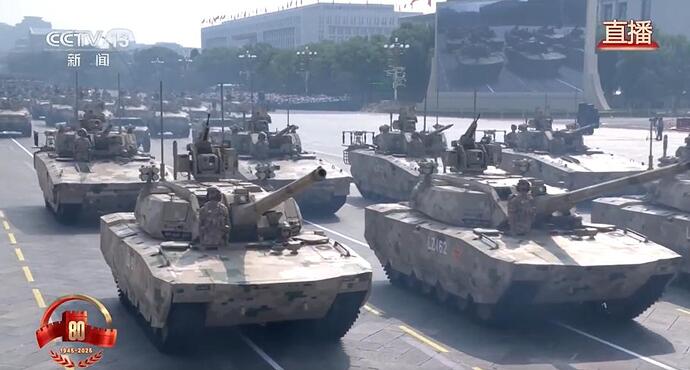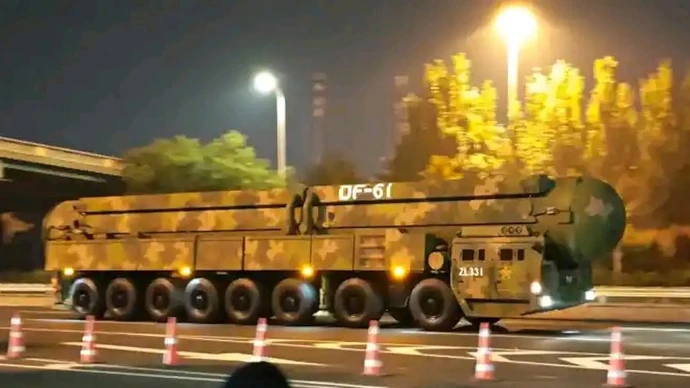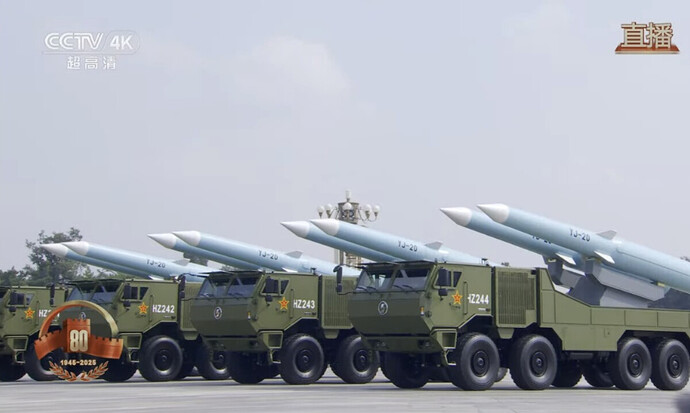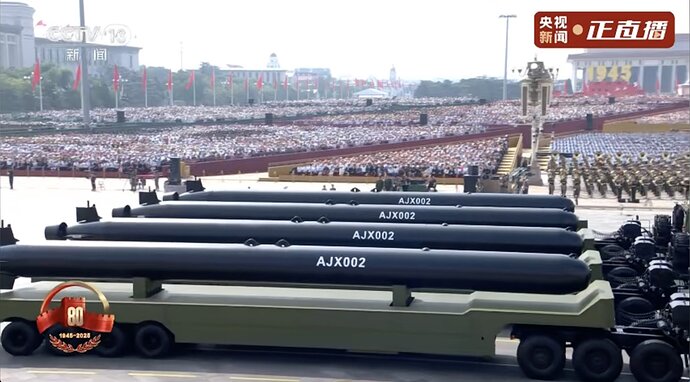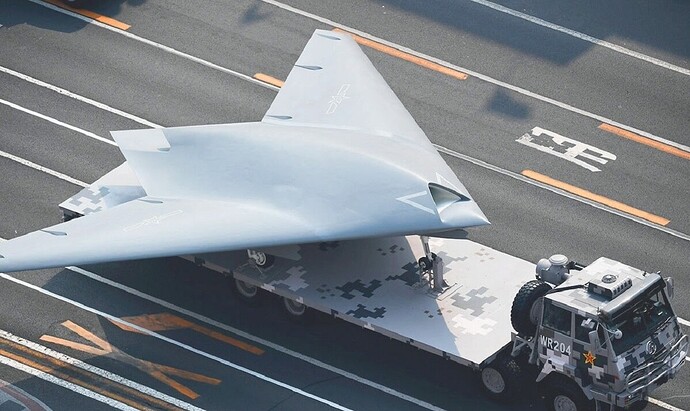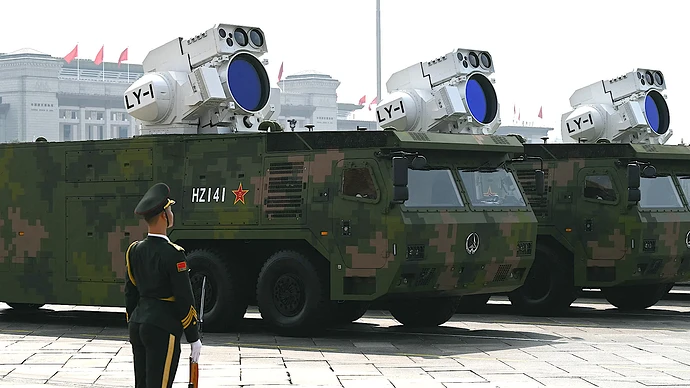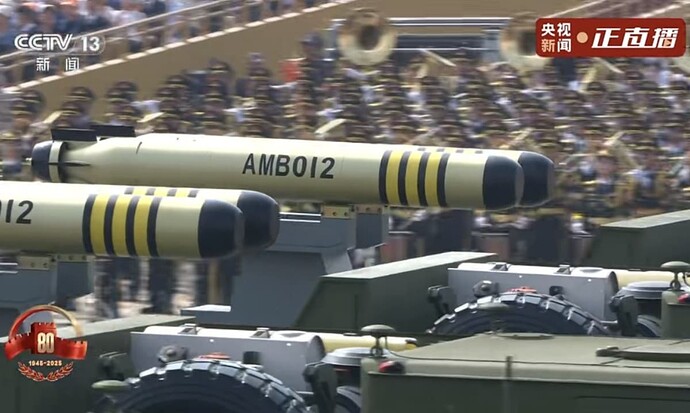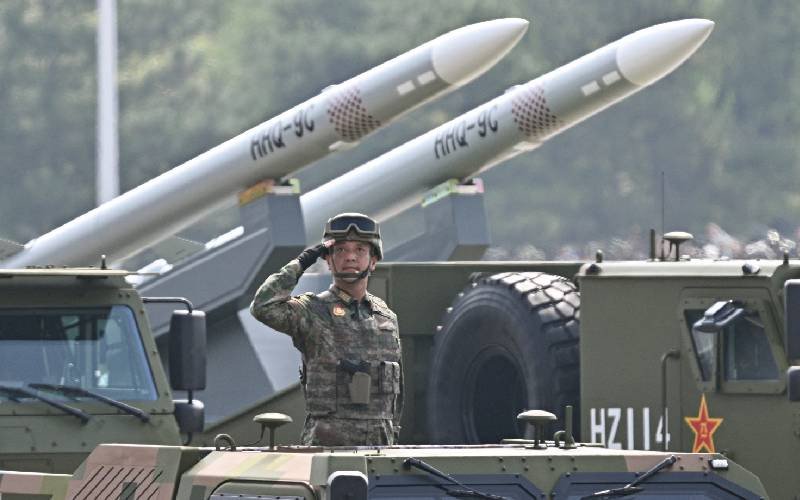China held a grand military parade in Beijing’s Tiananmen Square to commemorate the 80th anniversary of the victory in the Chinese People’s War of Resistance Against Japanese Aggression and the World Anti-Fascist War. The parade featured a range of advanced weaponry, highlighting China’s military modernization and strategic capabilities. Below is a detailed summary of the major new weapons displayed, with a focus on their features and significance.
1. ZTZ-100 Tank (Type-100 Tank)
- Overview: The ZTZ-100, a fourth-generation main battle tank, made its debut, marking a significant upgrade over the previous Type-99A tank.
-
Features:
-
Equipped with an unmanned turret to reduce crew exposure to risks.
-
Integrated with advanced fire control systems and an active protection system (APS) capable of intercepting incoming anti-tank missiles.
-
Incorporates augmented reality (AR) technology for enhanced battlefield situational awareness.
-
Capable of deploying small quadcopter drones for reconnaissance or anti-drone operations.
-
Optimized power system for high-altitude and complex terrain operations.
-
-
Significance: The ZTZ-100 demonstrates China’s advancements in armored warfare, emphasizing intelligent and unmanned combat capabilities to meet modern battlefield demands.
2. DF-61 (Dongfeng-61) Intercontinental Ballistic Missile
- Overview: A new solid-fuel intercontinental ballistic missile (ICBM), likely an upgraded version of the DF-41, unveiled for the first time.
-
Features:
-
Range exceeds 7,500 miles (approximately 12,000 km), capable of targeting major global locations.
-
Mobile launch capability enhances survivability and strategic flexibility.
-
Equipped with multiple independently targetable reentry vehicles (MIRVs) for increased strike effectiveness.
-
Improved accuracy and mobility compared to the DF-41.
-
-
Significance: As a cornerstone of China’s nuclear deterrence, the DF-61 strengthens its strategic strike capability, particularly against the U.S. and its allies.
3. DF-5C (Dongfeng-5C) Intercontinental Ballistic Missile
- Overview: The latest variant of the liquid-fueled Dongfeng-5 ICBM series, showcased for the first time during the parade.
-
Features:
-
Range of approximately 12,400 miles (20,000 km), touted as having “global strike coverage.”
-
Silo-based launch system, designed for strategic deterrence.
-
Capable of carrying up to 12 nuclear warheads with enhanced multi-target strike capabilities.
-
Improved accuracy and reliability over earlier models.
-
-
Significance: The DF-5C bolsters China’s nuclear triad (land, sea, and air-based), enhancing its ability to strike global targets, particularly the U.S. mainland.
4. JL-3 (Giant Wave-3) Submarine-Launched Ballistic Missile
- Overview: A new submarine-launched ballistic missile (SLBM) deployed on China’s latest nuclear submarines (e.g., Type 094A or 096), publicly displayed for the first time.
-
Features:
-
Range of 10,000–12,000 km, capable of targeting the U.S. mainland and the Asia-Pacific region from underwater.
-
Supports multiple independently targetable reentry vehicles (MIRVs) for enhanced penetration capabilities.
-
Equipped with advanced guidance systems for improved accuracy.
-
Designed for covert underwater launches, increasing strategic surprise.
-
-
Significance: The JL-3 completes China’s sea-based nuclear deterrence, forming a robust nuclear triad alongside the DF-61 and DF-5C, enhancing second-strike capabilities.
5. YJ-15, YJ-17, YJ-19, YJ-20 (Yingji Series) Hypersonic Anti-Ship Missiles
- Overview: The parade showcased multiple Yingji (Eagle Strike) anti-ship missiles, with the YJ-15 debuting and the YJ-17, YJ-19, and YJ-20 as upgraded variants.
-
Features:
-
YJ-15: A new hypersonic anti-ship missile with a range of 800–1,000 km, designed to target large surface vessels like aircraft carriers.
-
YJ-17: Features a “skip-glide” warhead (similar to the DF-17), making it difficult to intercept.
-
YJ-19/YJ-20: Extended range, suitable for launch from ships or aircraft, with all-weather combat capabilities.
-
All utilize hypersonic technology (speeds exceeding Mach 5) and advanced precision guidance systems.
-
-
Significance: These missiles enhance China’s anti-access/area denial (A2/AD) capabilities, posing a significant threat to U.S. naval forces, particularly carrier strike groups, in the Western Pacific.
6. AJX002 Large Unmanned Underwater Vehicle
- Overview: A 65-foot-long unmanned underwater vehicle (UUV), unveiled for the first time, designed for underwater combat and reconnaissance.
-
Features:
-
Capable of performing reconnaissance, surveillance, anti-submarine warfare, or mine-laying tasks.
-
Equipped with autonomous navigation and long-endurance capabilities for operations in complex maritime environments.
-
May carry lightweight weapons or sensors with modular designs for multi-mission adaptability.
-
-
Significance: The AJX002 highlights China’s advancements in unmanned underwater warfare, enhancing naval stealth and flexibility in asymmetric operations.
7. GJ-11 Stealth Attack Drone
- Overview: An upgraded stealth unmanned combat aerial vehicle (UCAV), capable of coordinating with manned aircraft.
-
Features:
-
Low observability for penetrating enemy air defenses.
-
Can carry precision-guided munitions for reconnaissance, strike, or electronic warfare missions.
-
Integrates with manned fighters like the J-20, enhancing air combat synergy.
-
-
Significance: The GJ-11 reflects China’s progress in unmanned and intelligent air warfare, strengthening multi-dimensional combat capabilities.
8. LY-1 Shipborne Laser Weapon
- Overview: A ship-mounted laser defense system, debuted for short-range defense and missile interception.
-
Features:
-
Capable of rapidly intercepting drones, cruise missiles, or small targets.
-
High precision and low-cost operation, ideal for terminal defense on naval vessels.
-
Likely integrated on new destroyers (e.g., Type 055).
-
-
Significance: Demonstrates China’s advancements in directed-energy weapons, countering drone and missile threats and enhancing naval defense.
9. AMB012 Underwater Weapon
- Overview: A new underwater combat system, specifics undisclosed, possibly an unmanned submersible or underwater missile system.
-
Features:
-
Suitable for maritime operations, supporting anti-submarine or underwater strike missions.
-
Likely equipped with stealth and remote-control capabilities.
-
-
Significance: Strengthens China’s naval underwater combat capabilities, adapting to modern naval warfare requirements.
10. Robotic Wolf (Quadruped Robot)
- Overview: A four-legged unmanned ground robot, debuted to highlight “intelligent warfare.”
-
Features:
-
Designed for reconnaissance, mine clearance, or direct combat.
-
Equipped with sensors and lightweight weapons, suitable for complex terrains.
-
Supports AI-driven autonomous operations, reducing personnel risk.
-
-
Significance: Showcases China’s progress in unmanned ground systems, tailored for future intelligent battlefields.
11. HHQ-9C (Hongqi-9C) Air Defense Missile
- Overview: The latest upgrade of the Hongqi-9 air defense system, debuted for medium-to-high-altitude defense.
-
Features:
-
Range of approximately 200–300 km, capable of intercepting aircraft, cruise missiles, and hypersonic targets.
-
Equipped with advanced phased-array radar for multi-target tracking.
-
Integrated anti-missile capabilities for protecting critical infrastructure.
-
-
Significance: As a core component of China’s air defense system, it enhances interception capabilities against high-threat targets.
12. ZTZ-201 Light Tank
- Overview: A light tank showcased during parade rehearsals, designed for rapid deployment and high-mobility operations.
-
Features:
-
Lightweight design, suitable for mountainous and high-altitude combat.
-
Equipped with advanced fire control systems and modular weaponry.
-
Potentially integrates drone-assisted combat capabilities.
-
-
Significance: Meets the demands of complex terrain operations, enhancing ground force mobility and flexibility.
